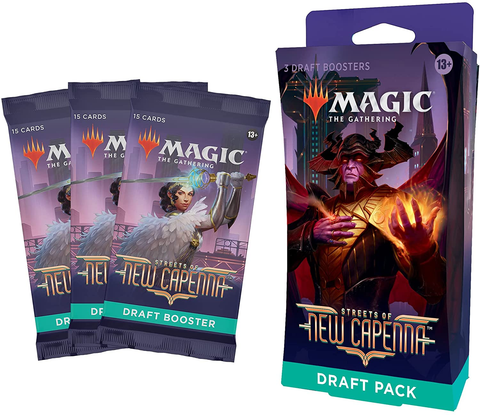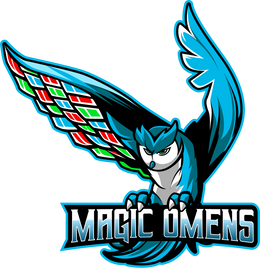A number of Magic the Gathering formats evolved over the years. Each format allows players to use a different pool of cards, and some formats even change the deck-building rules. EDH limits players to one copy of a card in the deck. Standard decks consist of cards only from a few most recent Magic the Gathering sets. Vintage lets players use almost every card printed in the history of Magic the Gathering.
Out of all Magic the Gathering formats, modern is the most popular format for competitive play. Modern is a non-rotating constructed format that includes all legal cards printed since Eighth Edition (2003). This results in a huge card pool to experiment with while cutting out extremely expensive cards from the reserved list.
The health and longevity of the format make modern appealing to experienced Magic the Gathering players. While some formats constantly have radical changes to the meta, Modern meta remains stable as it slowly changes over time.
Modern - The best competitive format MtG has to offer
The first thing that comes to mind when someone mentions modern is variety. The number of cards available for deck building ensures that any strategy can be viable in a Modern deck. This results in more enjoyable events where you will play against a completely different deck every game. The variety of decks makes Modern more interesting than Standard. Standard usually has only 2-3 meta decks that everyone plays, making it a format that can feel stale at times.
Draft booster box of Modern Horizons II
Since Modern has a large number of different decks that can be played, understanding the metagame is the key to success. In some formats, the stronger deck will win almost every match. At Modern events, the difference in the strength of decks isn’t as clear. A player that can recognize what he is playing against and correctly assess the threats will have the upper hand in a game.
The biggest drawback of Modern is the budget required to create a competitive deck. Building a competitive deck can cost you $500 - $1000. The good thing is that cards are rarely banned in Modern, so once you make a deck, it can last you for ages. On the other hand, the Standard meta frequently changes, and Standard players have to build new decks every few months. Decks for more casual players can be built for a significantly lower price. That being said, Modern decks are cheaper than Vintage and Legacy decks by a large margin.
Modern pros and cons
Pros:
- Variety of decks and archetypes
- Dynamic metagame
-
Once built, Modern decks last for years
Cons:
- Pricey decks
Iconic Modern deck archetypes
I already mentioned that one of the main reasons modern is appealing is the variety of decks you can encounter. All Magic the Gathering archetypes can be divided into four categories; Aggro, Midrange, Combo, and Control. Modern has a bunch of popular archetypes in each of the four categories. This article would become a small book if I explained every popular archetype, so I will select some of the most popular to give you a glimpse into the variety of Modern.
Tron
Tron is the nickname used for the combination of three Urza lands; Urza’s Mine, Urza’s Power Plant, and Urza’s Tower. When all three of those lands are in play, they generate a total of 7 mana. This lets Tron players play huge threats early on.

Tron decks come in all colors, but the most popular version of the deck is Mono-Green Tron. Sylvan Scrying, Expedition Map, and Ancient Stirrings help you assemble the Tron. Once you have all three Tron lands and any other mana source in play, you can cast spells Sundering Titan and Ugin, the Spirit Dragon, putting you at a huge advantage early on.
Burn
Burn is a "go for the throat" archetype in Magic the Gathering. The strategy of Burn decks is simple; reduce the opponent’s life to 0 before they have time to get their deck going. The deck utilizes cheap spells like Lava Spike, Goblin Guide, and Monastery Swiftspear to chip opponents’ life total constantly. Decision-making in Burn decks comes down to assessing should you use any target spells like Lightning Bolt and Rift Bolt to remove threats or to reduce your opponent’s life total.
Dredge
The strategy of Dredge decks is to send cards from your library to your graveyard and reap rewards for doing so. Life from the Loam, Golgari Thug, and Stinkweed Imp help Dredge players fill the graveyard. Bloodghast and Prized Amalgam can be cheated into play from the graveyard. And cards like Narcomoeba and Creeping Chill have payoffs when they are sent from the library to the graveyard. With all those cards combined, you will essentially be working on milling yourself and doing nasty things to your opponent along the way.
Affinity
 The strategy of affinity decks is to play a lot of cheap artifacts and win using cards that reward you for having lots of artifacts in play. Ornithopter, Memnite, and Welding Jar look harmless on their own, but they let you cast spells like Thoughtcast and Thought Monitor for 1 mana. With enough artifacts on the board, the Affinity player can close the game with Cranial Plating or Nettlecyst before his opponent has time to develop.
The strategy of affinity decks is to play a lot of cheap artifacts and win using cards that reward you for having lots of artifacts in play. Ornithopter, Memnite, and Welding Jar look harmless on their own, but they let you cast spells like Thoughtcast and Thought Monitor for 1 mana. With enough artifacts on the board, the Affinity player can close the game with Cranial Plating or Nettlecyst before his opponent has time to develop.
Blink
Blink decks are named after cards like Yorion, Sky Nomad and Ephemerate that exile cards from the battlefield and return them back to the battlefield. Blink decks utilize permanents with powerful enter the battlefield (ETB) effects such as Solitude and Eternal Witness. Once they are on the battlefield, they can be repeatedly blinked to reuse their ETB effects.
Prepare for Modern by learning in Pauper
When building a Pauper deck, players can use any non-banned card in the history of Magic the Gathering that has been printed as common. Some powerful cards, such as Lightning Bolt and Counterspell, which were originally printed as commons and later reprinted at a higher rarity, are considered common and legal in Pauper.

Pauper shares some popular deck archetypes with modern, so it is an excellent way to prepare for playing Modern without making a huge investment. The greatest appeal of the Pauper is the low price of the powerful pauper decks. You can build any competitive pauper deck for $50 - $100.
Pauper comes with its own drawbacks. A smaller pool of cards results in a smaller variety of decks. Another problem is that some cards considered impactful in Modern are legal in pauper. New players preparing for Modern by playing Pauper often get used to Pauper meta, resulting in a poor threat assessment once they switch to Modern.
Pauper pros and cons
Pros:
- Shares some interesting archetypes with Modern
- Affordable
- Good for becoming familiar with popular interactions
Cons:
- Lacks some enjoyable archetypes
- Less variety when compared to Modern
Limited formats – Build your collection while learning how to play Magic the Gathering
Limited formats in Magic the Gathering are formats where players open a specified number of Magic the Gathering products and construct a deck using only the cards they opened in those products. Players get to keep all the cards they opened on limited events. This way, you can enjoy learning how to play Magic the Gathering while building your collection of cards.

In limited formats, players will rarely have to deal with complex interactions. This makes Draft and Sealed excellent for learning basic interactions in Magic the Gathering. If you are a beginner, it is natural that you will often lose to more experienced players. The good thing about losing in Limited formats is that the reason you lost will never be the other player spending more money on the cards. If you are just starting out, I recommend that you learn how to play drafts. Building a deck and testing it on the spot is a fun way to get into Magic the Gathering.
Limited formats pros and cons
Pros:
- Good for learning basic interactions
- You build your MtG collection as you play
- Budget wise players are on equal footing
Cons:
- No complex interactions
- A significant element of luck when building a Sealed deck
Interesting Modern budget deck lists to get you started
Building a competitive deck in Modern is expensive, but there are plenty of options for interesting Modern casual decks that can be built cheaply. I recommend starting with a few budget decks if it is your first time playing modern. Every Modern archetype has a budget version of the deck, so it is a good idea to try out different archetypes before dedicating your wallet to a competitive deck.
Storm Goblins
Storm Goblins is an aggressive deck that tries to win quickly by casting a bunch of spells before casting Empty the Warrens to swarm the board with a bunch of goblins. Commune with the Gods helps you find Fecundity. Fecundity is there to fill your hand while you build up your storm counter. Finally, after you cast half of your library, Grapeshot suddenly becomes a finisher.

Price: $70
Creatures:
4x Goblin Instigator
4x Mogg War Marshal
4x Skirk Prospector
4x Wild Cantor
1x Voracious Dragon
Instants:
4x Lightning Bolt
1x Battle Hymn
Sorceries:
4x Commune with the Gods
4x Empty the Warrens
4x Faithless Looting
1x Grapeshot
1x Hordeling Outburst
2x Infernal Plunge
Enchantments:
4x Fecundity
Lands:
1x Forest
9x Mountain
4x Karplusan Forest
4x Rootbound Crag
Sideboard:
3x Ancient Grudge
1x Anger of the Gods
2x Destructive Revelry
2x Pyroclasm
3x Stone Rain
4x Tormod’s Crypt
Abzan Rites
Abzan Rites is a deck based around cheating powerful creatures in your graveyard to the battlefield. The goal of the deck is to fill your graveyard with cards like Satyr Wayfinder and use Unburial Rites or Persist to cheat creatures with high mana value into play. Once you have Ashen Rider or Archon of Cruelty in play, you can use Ephemerate to reuse their powerful enters the battlefield effects.

Price: $130
Creatures:
2x Archon of Cruelty
2x Ashen Rider
1x Eternal Witness
4x Satyr Wayfinder
4x Siege Rhino
Instants:
3x Ephemerate
4x Grisly Salvage
Sorceries:
4x Bone Shards
2x Lingering Souls
4x Persist
2x Unburial Rites
4x Unmarked Grave
Lands:
4x Branchloft Pathway
4x Caves of Koilos
1x Field of Ruin
2x Forest
1x Ghost Quarter
1x Hissing Quagmire
1x Indatha Triome
4x Llanowar Wastes
2x Plains
1x Shambling Vent
1x Stirring Wildwood
2x Swamp
Sideboard:
2x Callous Bloodmage
2x Damping Sphere
2x Duress
2x Fulminator Mage
1x Kaya, Orzhov Usurper
2x Knight of Autumn
1x Path to Exile
1x Thragtusk
2x Vindicate
Author - Ante Radoš











